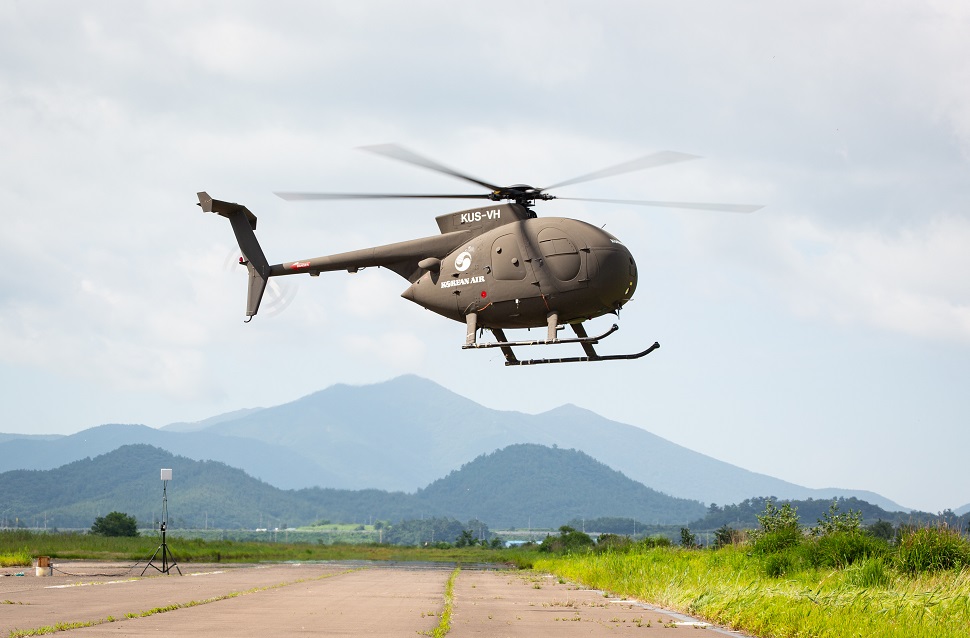Work is continuing on a South Korean project to convert elderly MD Helicopters MD500s into unmanned rotorcraft, with the sole prototype eventually to be handed over to the country's army for assessment.
First flight of the aircraft, known as the 500MD, took place in July and Korean Air Aerospace Division (KAL-ASD), which is leading the modification effort, is now assessing data from that sortie.
Kim Hong Dae, team general manager UAV Systems at KAL-ASD, says a second flight is planned for 2021. At this point, the company will make the rotorcraft available for testing by the South Korean army.
Although the service has no official requirement for the unmanned helicopter, KAL-ASD hopes to sell 500MDs to both the army and marines.
The project is funded by KAL-ASD and has seen a significant investment of resources. Initially an optionally piloted vehicle was developed in conjunction with Boeing, drawing on the US company’s work on the unmanned H-6U Little Bird programme. The H-6 is a derivative of the MD500.

The maiden flight of the unmanned 500MD
KAL-ASD
That first phase was followed by the development of an unmanned flight-control system that includes flight-control computers, actuators, and airframe modifications. Extensive ground tests were conducted before the maiden sortie.
Kim says the MD500 was the first aircraft produced in South Korea, with KAL-ASD licence building some 500 examples in the late 1970s and early 1980s. The aircraft converted for unmanned use dates from 1976.
“Our development target is to provide the unmanned helicopter to the Korean army to operate and evaluate whether it is proper for their mission capabilities,” he says.
The mock-up of the rotorcraft on static at the recent ADEX show featured a pod for 70mm (2.75in) rockets and a pair of Lockheed Martin AGM-114 Hellfire missiles, as well as a chin-mounted electro-optical/infrared sensor. The cockpit was completely blanked out.
Apart from military applications, KAL-ASD sees the type performing firefighting missions - dropping retardant in remote mountainous areas at night. It could also conduct logistics missions to remote or austere locations.
Kim adds that a major element of the project is learning processes and procedures for converting manned platforms into unmanned ones. While there are no specific plans, he foresees future conversions of Sikorsky UH-60 utility helicopters and Northrop F-5 fighters.
In addition, the company is in the final phase of testing its Medium-Altitude Unmanned Aerial Vehicle (MUAV), a single-engined design. Existing work is focused on validating its performance and functionality, says Kim, with development due to be completed by year-end.





























